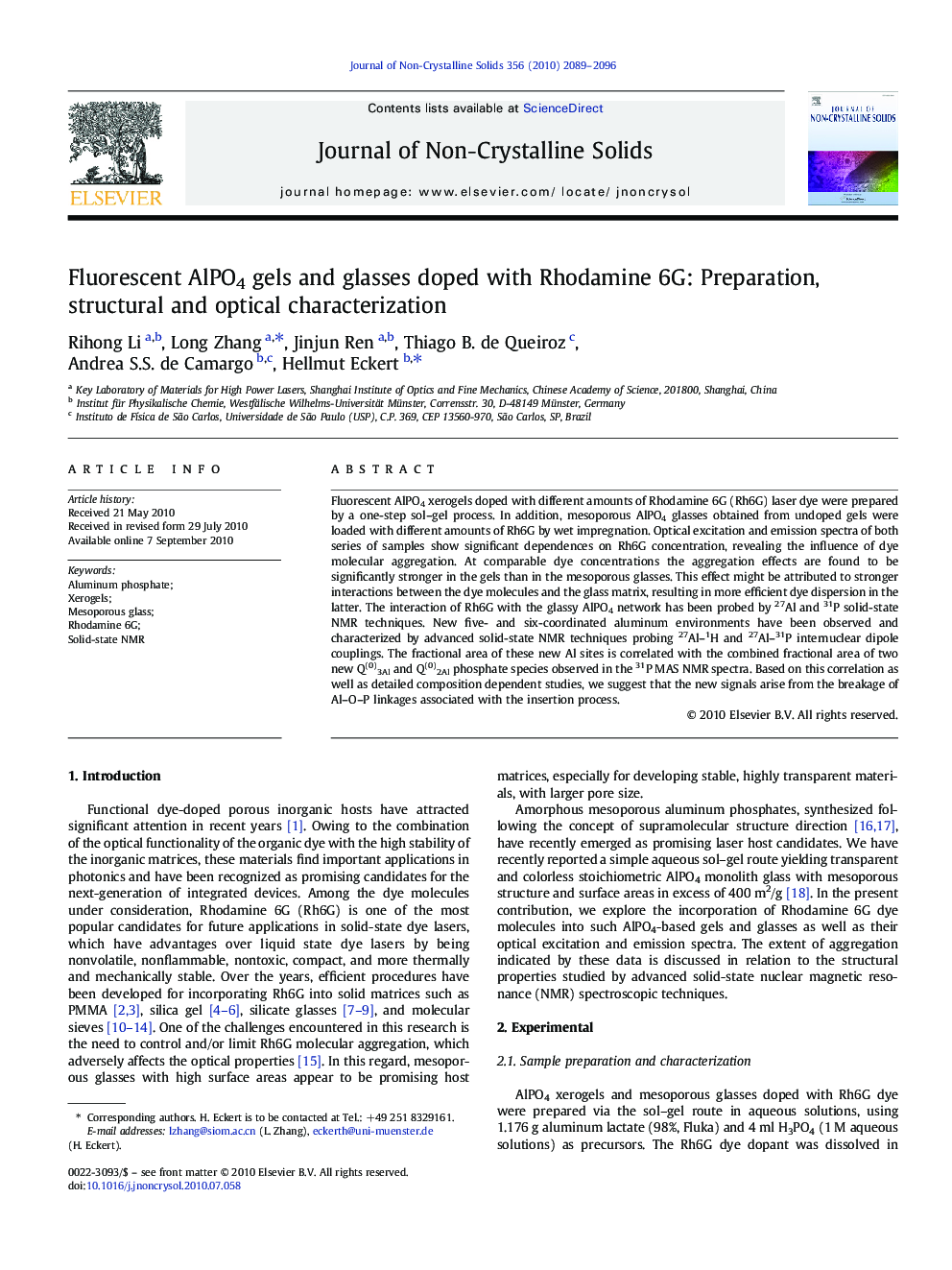| Article ID | Journal | Published Year | Pages | File Type |
|---|---|---|---|---|
| 1483232 | Journal of Non-Crystalline Solids | 2010 | 8 Pages |
Fluorescent AlPO4 xerogels doped with different amounts of Rhodamine 6G (Rh6G) laser dye were prepared by a one-step sol–gel process. In addition, mesoporous AlPO4 glasses obtained from undoped gels were loaded with different amounts of Rh6G by wet impregnation. Optical excitation and emission spectra of both series of samples show significant dependences on Rh6G concentration, revealing the influence of dye molecular aggregation. At comparable dye concentrations the aggregation effects are found to be significantly stronger in the gels than in the mesoporous glasses. This effect might be attributed to stronger interactions between the dye molecules and the glass matrix, resulting in more efficient dye dispersion in the latter. The interaction of Rh6G with the glassy AlPO4 network has been probed by 27Al and 31P solid-state NMR techniques. New five- and six-coordinated aluminum environments have been observed and characterized by advanced solid-state NMR techniques probing 27Al–1H and 27Al–31P internuclear dipole couplings. The fractional area of these new Al sites is correlated with the combined fractional area of two new Q(0)3Al and Q(0)2Al phosphate species observed in the 31P MAS NMR spectra. Based on this correlation as well as detailed composition dependent studies, we suggest that the new signals arise from the breakage of Al–O–P linkages associated with the insertion process.
